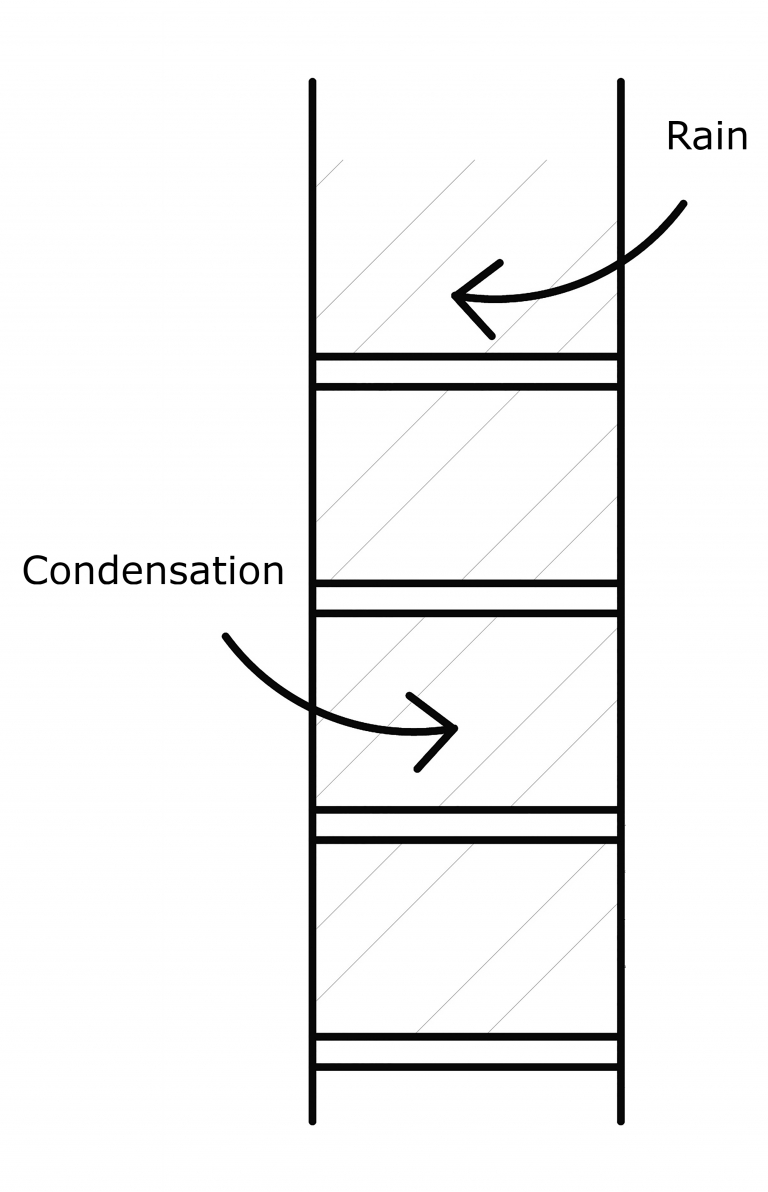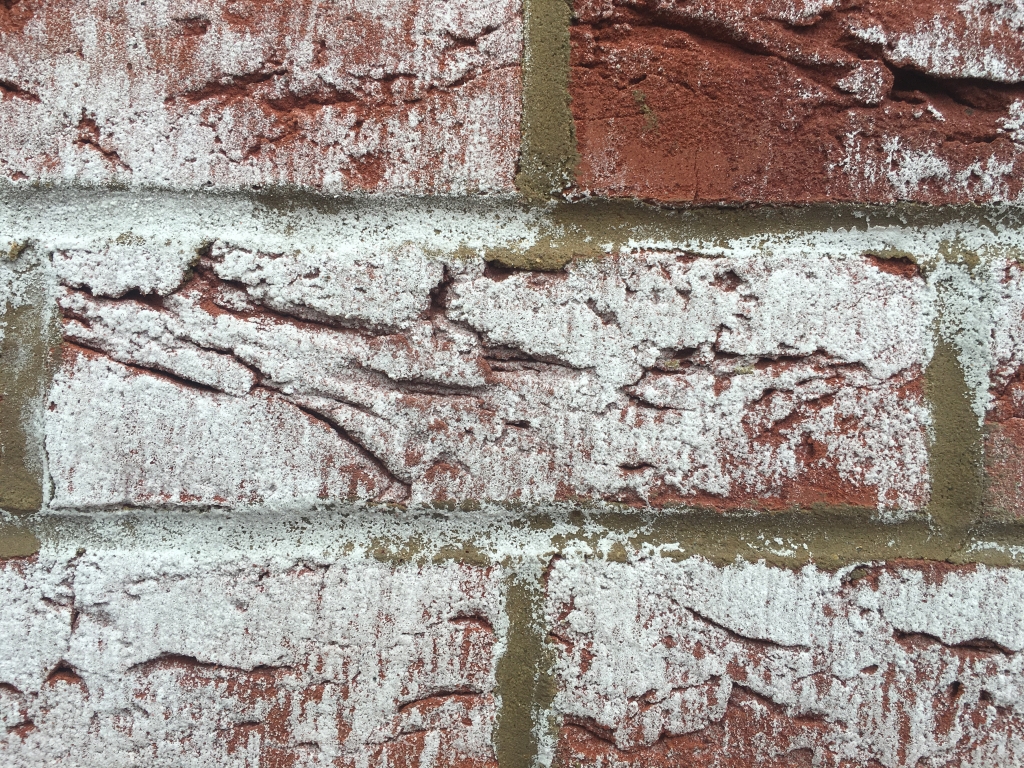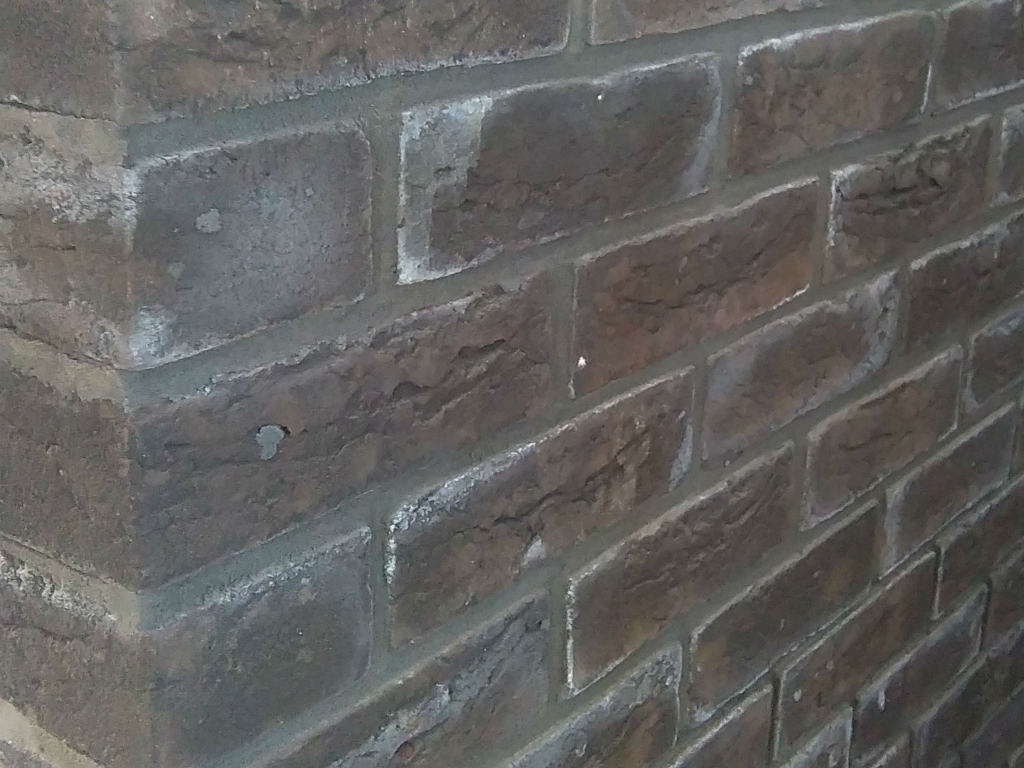Efflorescence, Lime Staining and Good Site Practice
Common efflorescence is the visible occurrence of salts on the face of the brickwork. Soluble salts are left on the surface of the brickwork by water which has passed through the face of the brickwork and evaporated. Lime staining is completely different but is often confused with efflorescence. Both can occur simultaneously. Lime staining is free lime which has been washed from the mortar joints on to the face of the brick.
Prevention
Contractors and Contract Administrators should ensure the following: This will minimise the rain penetrating the brickwork. All the below can lead to efflorescence.
- Mortar should also be kept protected from damp and contamination.
- Bricks should not be placed directly on the ground.
- Newly built brickwork is vulnerable while the mortar cures, it should be protected for at least the first seven days.
- The scaffolding boards adjoining the wall must be turned back when work ceases.
- Mortar must be kept clear from the inside cavity which could otherwise deflect water into the brickwork.
- Internal snots and mortar which has not been cleaned is unacceptable and may lead to efflorescence.
- Mortar droppings on wall ties can also cause water to run on the rear of the brick skin.
- Weep holes need to be clear of debris which will collect during and after completion. Cavity trays need to be clear of droppings. If droppings have accumulated bricks may have to be removed locally to gain access to the cavity.

Efflorescence
Good site practice will largely eliminate efflorescence and lime staining. The solutions are different. Efflorescence should be allowed to weather away naturally and no spraying is advised. Good site practice will largely eliminate efflorescence and lime staining. The solutions are different. Efflorescence should be allowed to weather away naturally and no spraying is advised.
Effloresence covers the face of the brick.
- Fired clay may contain soluble salts.
- Brickwork when saturated dissolves salts.
- When the brick dries the moisture moves to the surface.
- The moisture evaporates leaving the salts as efflorescence.
Lime Staining
Lime staining is the deposit of calcium carbonate by reacting to the atmosphere on to the face of the brickwork. Lime staining can be distinguished by the flat top to the staining stemming from the bedjoint, or alternatively fanning out from the cross joint, clearly associated with the horizontal or vertical joints.
Lime is normally removed by proprietary acid brick cleaner. Unlike efflorescence speed is vital and if the calcium carbonate is allowed to solidify back into limestone only specialists will be able to remove it. Lime Staining stems from the joints.
- The wall is unprotected and becomes saturated.
- Free lime released by the mortar seeps out of the joints.
- Calcium hydroxide is formed on the surface turning into calcium carbonate or limestone which is impervious to water.


HOW CAN WE HELP?
Contact our experienced team today to discuss your project in more detail
